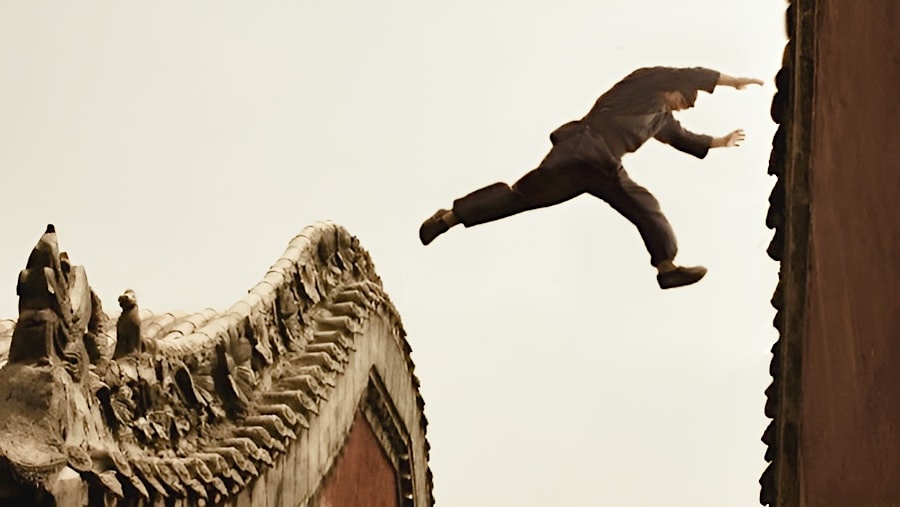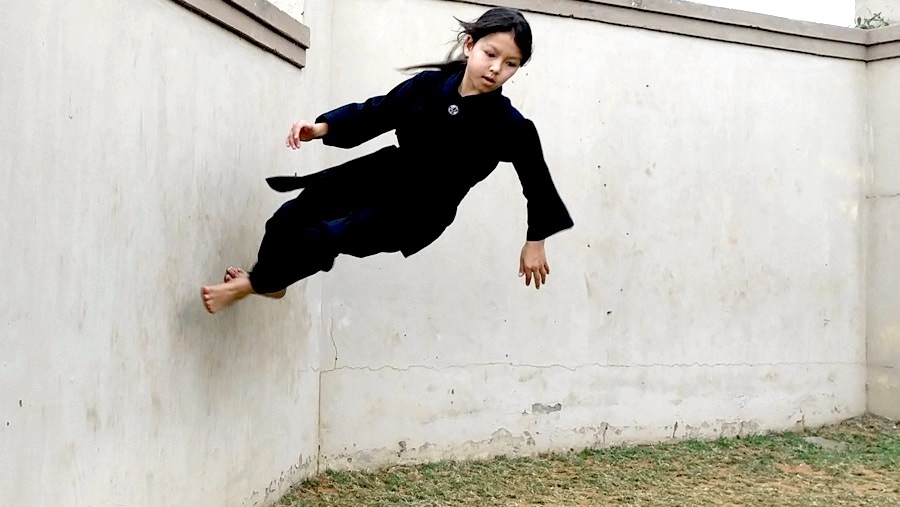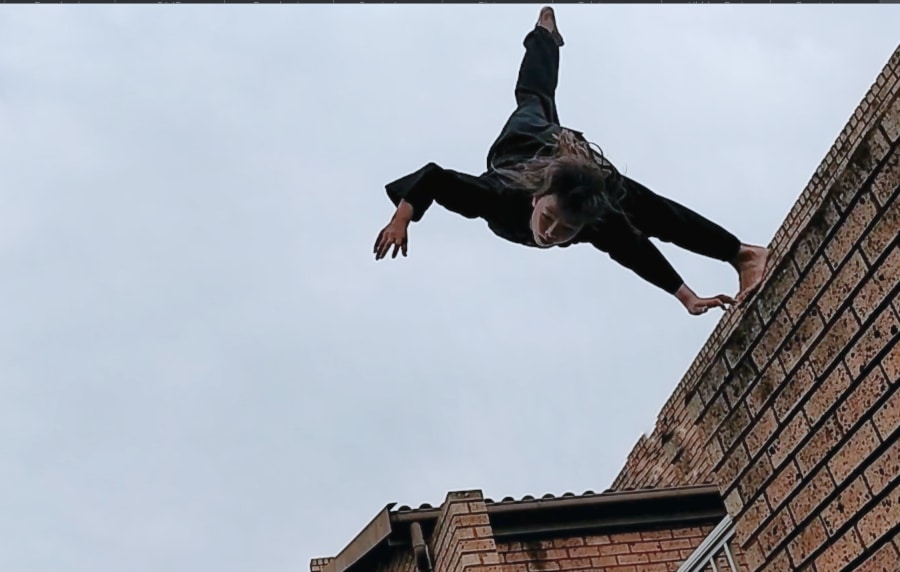
Feiyan zoubi 飛簷走壁, ‘flying roofs running walls’ – Author, Les Conn on the roofs in Beijing (c.2003)
Feiyan zoubi 飛簷走壁, which translates to ‘flying eaves running walls,’ refers to a skill in Chinese martial arts associated with stealth and evasion. Practitioners of this skill are often depicted as possessing the ability to move gracefully over rooftops and along narrow ledges, evoking images of individuals who can penetrate or escape secure areas by taking unconventional paths.
In practice, feiyan zoubi 飛簷走壁 relies on rigorous training to enhance balance, agility, and spatial awareness. Although often exaggerated in popular media, the roots of the skill stem from real physical techniques that enable martial artists to traverse rooftops. Historically, these skills were crucial for stealth operatives like shitou 市偷 or cike 刺客.
The literal meaning of feiyan zoubi 飛簷走壁 is:
飛 (fei) – ‘to fly’
簷 (yan) – ‘eaves’ or ‘overhang’ (typically the edge of a roof)
走 (zou) – ‘to run’
壁 (bi) – ‘wall’
Warrior Heart 戰士心 and Feiyan zoubi 飛簷走壁
It is essential to highlight that in the Warrior Heart School 戰士心門, flying eaves and running walls 飛簷走壁 refers to the skill of navigating and efficiently traversing the rooftops and wall systems of ancient Chinese cities. This skill is distinct from bihu gong 壁虎功, or ‘gecko skill,’ which is also practised at Warrior Heart 戰士心. Bihu gong 壁虎功 or ‘gecko skill,’ encompasses climbing and hanging techniques used to ascend from street level, while flying eaves and running walls 飛簷走壁 is specifically applied to movement on rooftops.
This distinction is crucial because, in modern Chinese culture, many people struggle to discern the difference between gecko skills 壁虎功 and flying eaves and running walls 飛簷走壁 and their specific purposes.
Training
Feiyan zoubi 飛簷走壁 training requires agility, balance, strength, and body control.
- Balance and Agility Drills
Beam Walking: Practitioners train by walking, running, and even jumping along narrow beams or ledges to improve balance and mental focus. This exercise builds stability and comfort when navigating narrow or elevated paths. Beams are low and height increases with experience.
Bamboo Work: Practicing on bamboo poles helps develop core strength and balance, simulating the unstable and narrow surfaces encountered during feiyan zoubi 飛簷走壁movements.
Pole-to-Pole Leaping: Jumping between upright poles or small platforms set at varying heights trains precision and mental fortitude. - Jumping and Vaulting Exercises
Leap Training: Practicing broad jumps and vertical leaps over obstacles simulates the skill of moving between rooftops or ledges, essential for rapid escapes.
Vaulting Techniques: Training in various vaults (such as split vaults or dive rolls) helps develop fluid movement over obstacles, enabling smooth transitions during evasive manoeuvres. - Strength and Conditioning
Leg and Core Conditioning: Strong legs and core are crucial for both jumping and stabilising. Exercises like squats, lunges, and planks help develop the power needed for high leaps and stable landings.
Grip and Upper Body Strengthening: Climbing ropes, practising fingertip push-ups, and using hanging grips improve hand strength and endurance, allowing practitioners to hold onto ledges or climb walls. - Mindfulness and Fear Control
Height Acclimation Training: Practitioners gradually train at increasing heights to build mental resilience and confidence. Managing fear at height is essential for smooth, controlled movements in precarious situations.
Breath Control: Focused breathwork helps practitioners maintain calm and control adrenaline, and keep steady when balancing or making leaps in high-stress scenarios.
Training for feiyan zoubi 飛簷走壁 is demanding, often taking place outdoors on walls or rooftops under the supervision of experienced mentors, with the goal of creating both mental and physical adaptability. This skill is especially valued in stealth disciplines, blending physical prowess with keen awareness of surroundings.

Onyx Conn (2022), the authors daughter in practice of running walls f走壁.

In this image Onyx (age 12), dismounts the roof system using an aerial cartwheel to reduce landing stress. The total drop was about 20 ft in height.
